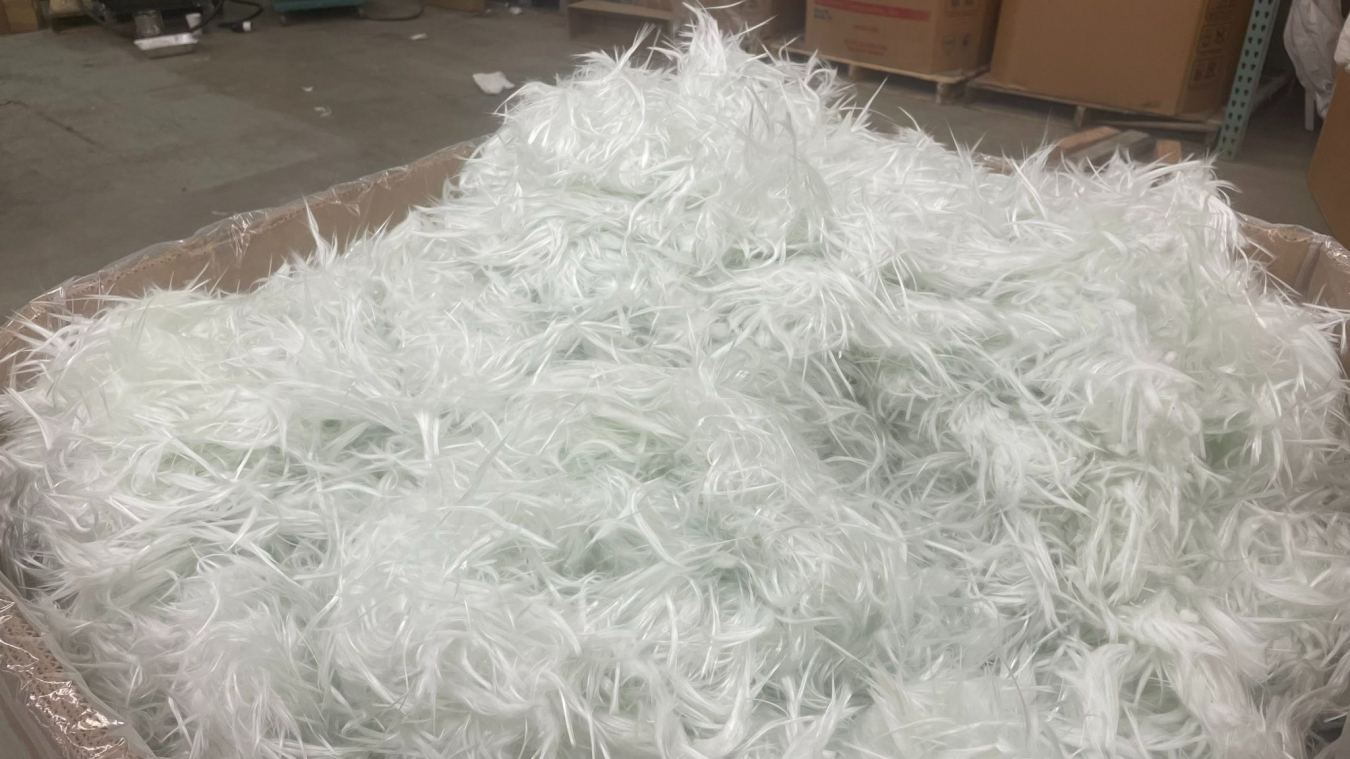Carbon Rivers, a company that produces advanced material and energy technologies, has commercialized a process that recovers clean, intact glass fiber from decommissioned wind turbine blades
Office of Energy Efficiency & Renewable Energy
September 13, 2022
Carbon Rivers achieved 99.9% pure recycled glass fiber from retired wind turbine blades. The high purity opens the potential for remelting, non-woven mats, 3D filament, and thermoplastic pellets so recycled glass fiber could be incorporated into new fiberglass applications, creating a circular economy
Carbon Rivers, a company that produces advanced material and energy technologies, has commercialized a process that recovers clean, intact glass fiber from decommissioned wind turbine blades and can divert thousands of tons of waste that would otherwise be destined for landfills. Glass fibers often make up to 50% of the composite—a combination of materials, such as polymers and fibers—used to create wind turbine blades. Carbon Rivers upcycles all components of the blade, including the steel.
With about $2.4 million in funding from the U.S. Department of Energy (DOE)’s Wind Energy Technologies Office and Small Business Technology Transfer program since 2019, the Carbon Rivers project team, in collaboration with the University of Tennessee, Knoxville, scaled up this recovery process. Carbon Rivers has already upcycled more than 100 tons of wind turbine blades into various manufacturing materials, such as non-woven mats, thermoplastic pellets, and filament for 3D printing. Now it is in the process of opening a facility that can recycle 5,000 blades, weighing 10 tons each, annually.
"Carbon Rivers exemplifies a model investment that accelerates commercialization," said Mike Derby, wind technology program manager at the Wind Energy Technologies Office. "WETO’s investment in this emerging technology will create jobs while dramatically improving turbine recycling at a scale that will transform the renewable energy industry."
Turning Up the Heat on the Recycling Process
Carbon Rivers recycles using a process called pyrolysis, in which intense heat breaks down the organic components of a composite in the absence of oxygen and separates them from the inorganic fiberglass. The process converts organic products back into raw hydrocarbon products (called syngas and pyrolysis oil), which can be used to produce energy. This gives the process a net positive energy output.
The separated recycled glass fiber can then be cleaned and reused in the manufacturing of new products.
A similar process has also been adopted for automotive, marine, structural, and glass waste materials to make recycled glass fiber into nonwoven fabrics, continuous textile yarns, sheet molding compounds for car panels, and plastic injection molding pellets for use in many plastic products. Recycled glass fiber can also be remelted and mixed with brand-new fiberglass to reinforce concrete, make building materials, and more.
Coming Soon: U.S. Recycling Center for Wind Turbine Blades
Carbon Rivers is turning part of its business into an entity called Windfall Inc. that will develop the first U.S.-based glass-fiber recycling facility at a historic location tied to energy production. The facility will be in Kingston, Tennessee, outside Knoxville, on a site that supported nuclear weapons production during World War II as part of the Manhattan Project.
This plant is expected to open in 2023 and recycle 20 wind turbine blades per day by 2025.
“A sustainable fiberglass industry will provide a circular-economy supply chain for the renewable energy sector and produce hundreds of new jobs focused on domestic materials production to support our energy infrastructure and decrease the United States’ dependence on foreign imports for fiberglass products,” said Carbon Rivers founder and CEO Bowie Benson.

